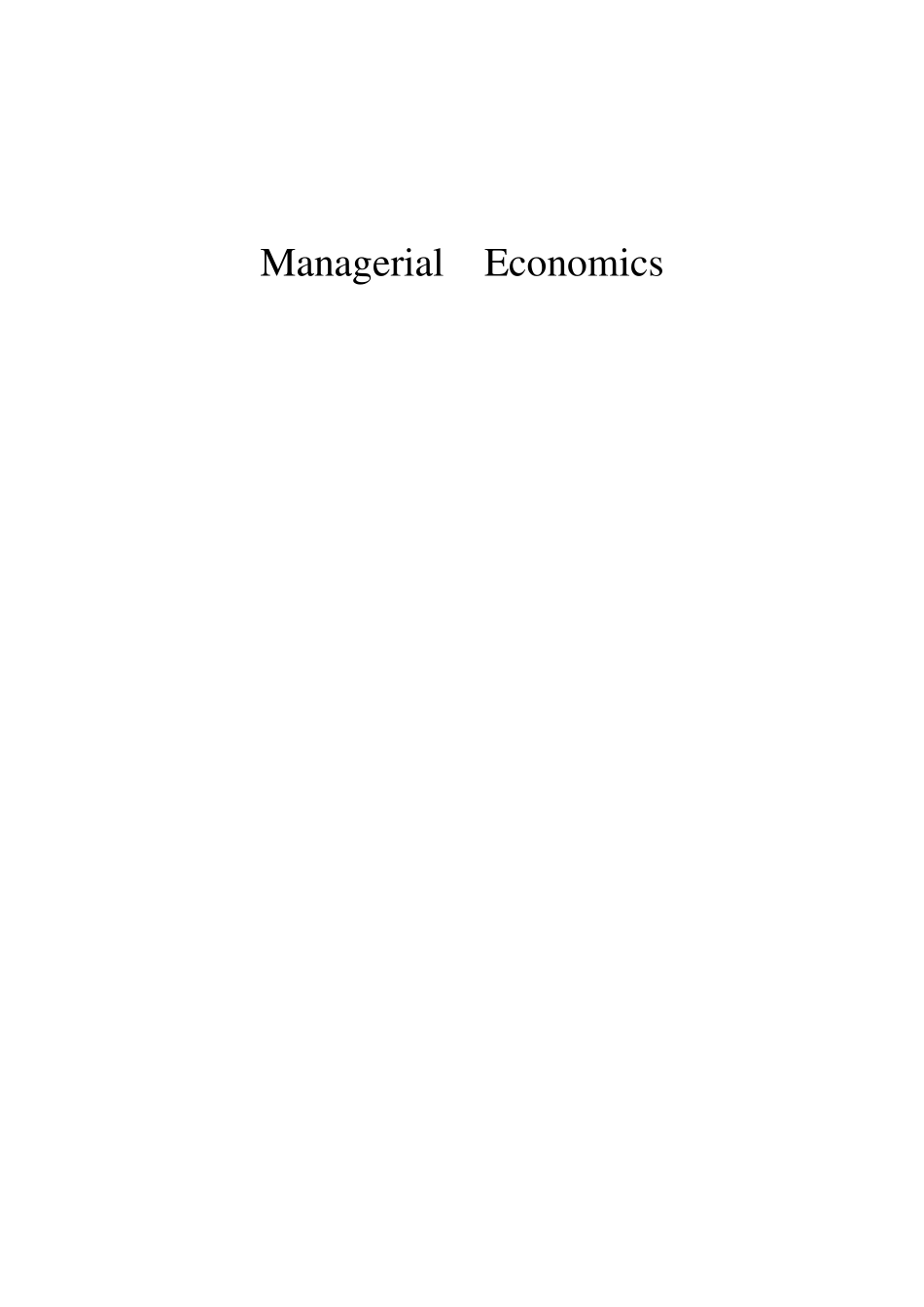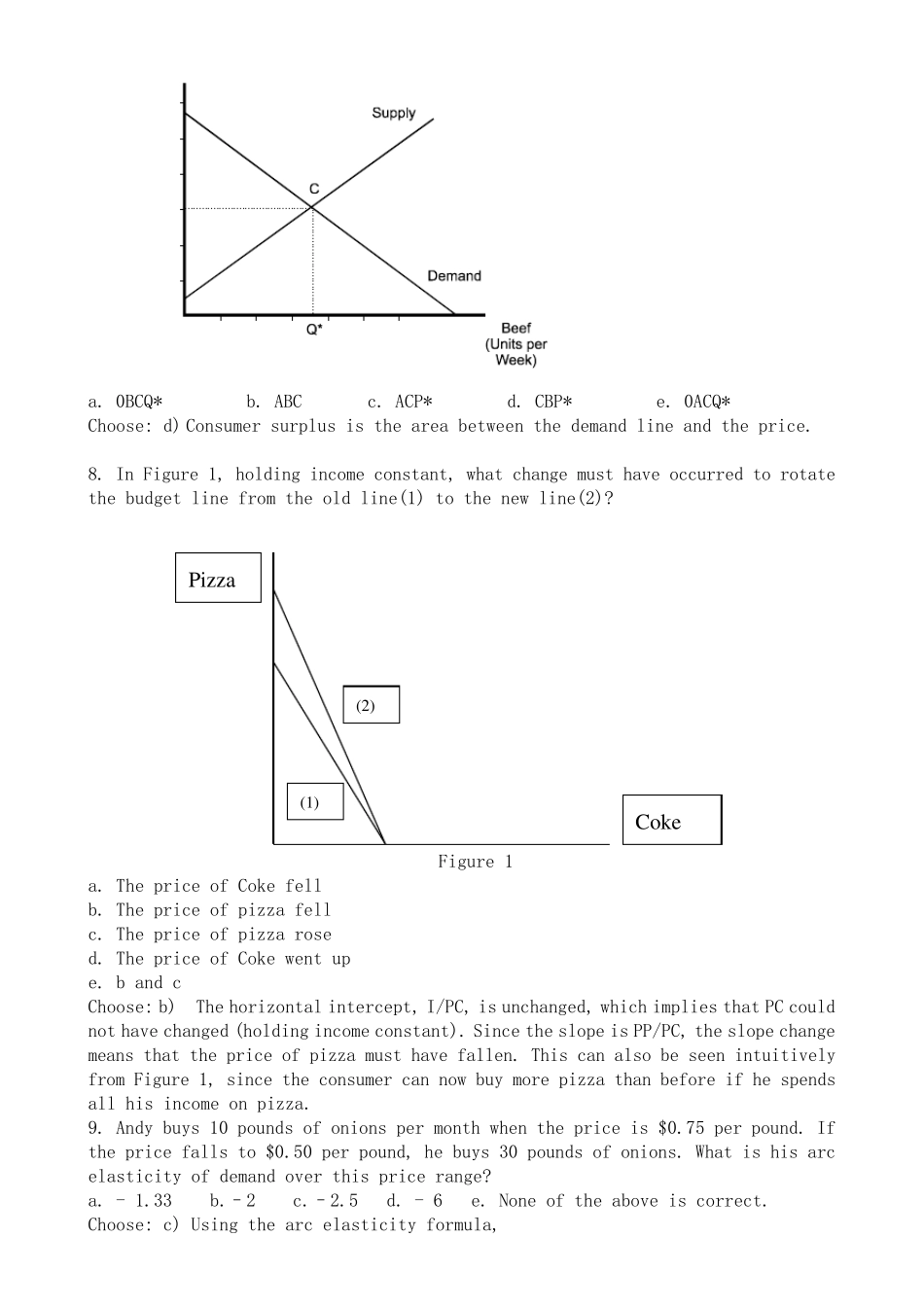Managerial Economics Part 1: 1. The price of good A goes up. As a result the demand for good B shifts to the left. From this we can infer that: a. good A is a normal good. b. good B is an inferior good. c. goods A and B are substitutes. d. goods A and B are complements. e. none of the above. Choose: d) the definition os complements 2. Joe's budget line is 15F + 45C = 900. When Joe chooses his most preferred market basket, he buys 10 units of C. therefore, he also buys : a. 10 units of F b. 30 units of F c. 50 units of F d. 60 units of F e. None of the above Choose: b) We assume that Joe will spend all his income. If C = 10, then 15F =900 – 45(10) =450, so F = 450/15 =30. 3. Kim only buys coffee and compact discs. Coffee costs $0.60 per cup, and CDs cost $12.00 each. She has $18 per week to spend on these two goods. If Kim is maximizing her utility, her marginal rate of substitution of coffee for CDs is: a. 0.05 b. 20 c. 18 d. 1.50 e. None of the above Choose: a) At Kim's most preferred market basket, her MRS equals the price ratio (Pcoffee/PCD), which equals 0.6/12 or 0.05. 4. The bandwagon effect corresponds best to which of the following? a. snob effect. b. external economy. c. negative network externality. d. positive network externality. Choose: d) 5. A Giffen good a. is always the same as an inferior good. b. is the special subset of inferior goods in which the substitution effect dominates the income effect. c. is the special subset of inferior goods in which the income effect dominates the substitution effect. d. must have a downward sloping demand curve. Choose: c) the definition of Giffen good 6. An Engel curve for a good has a positi...


